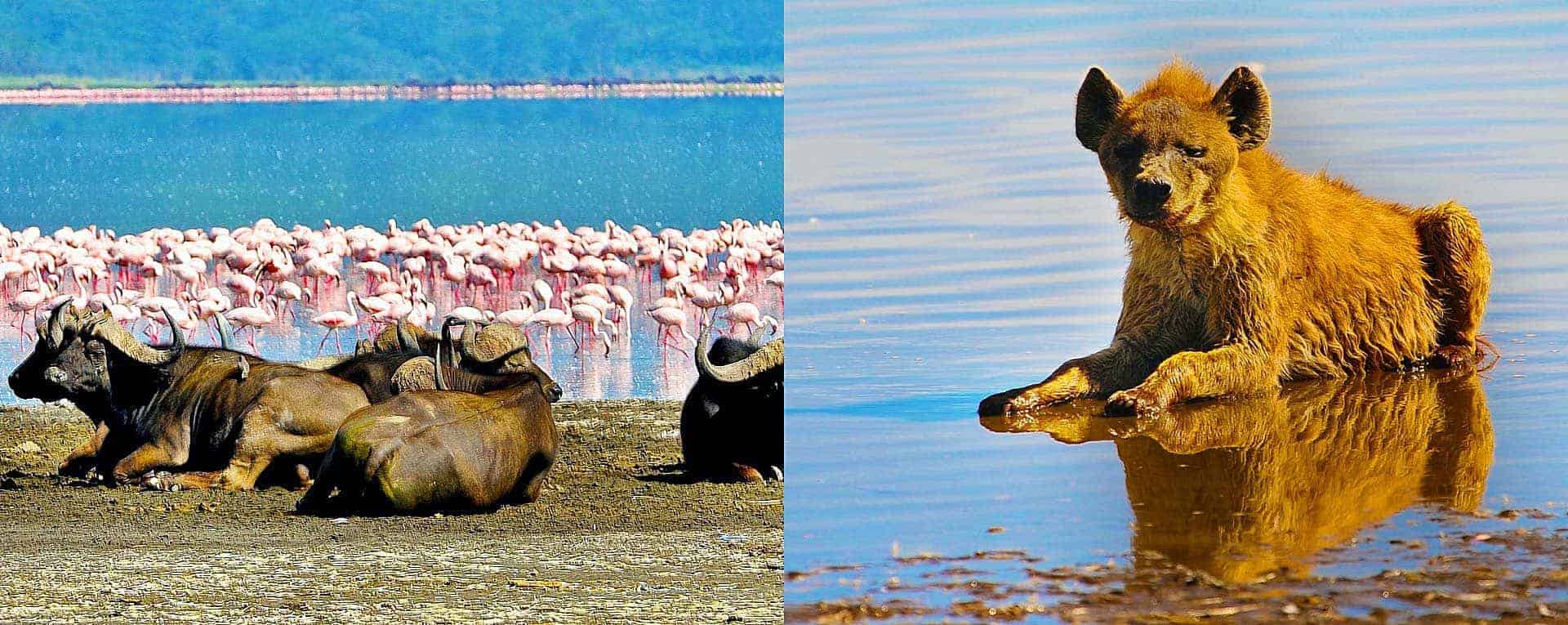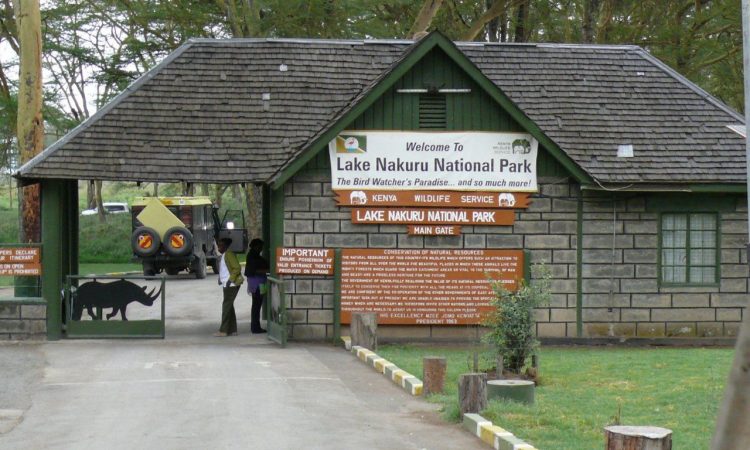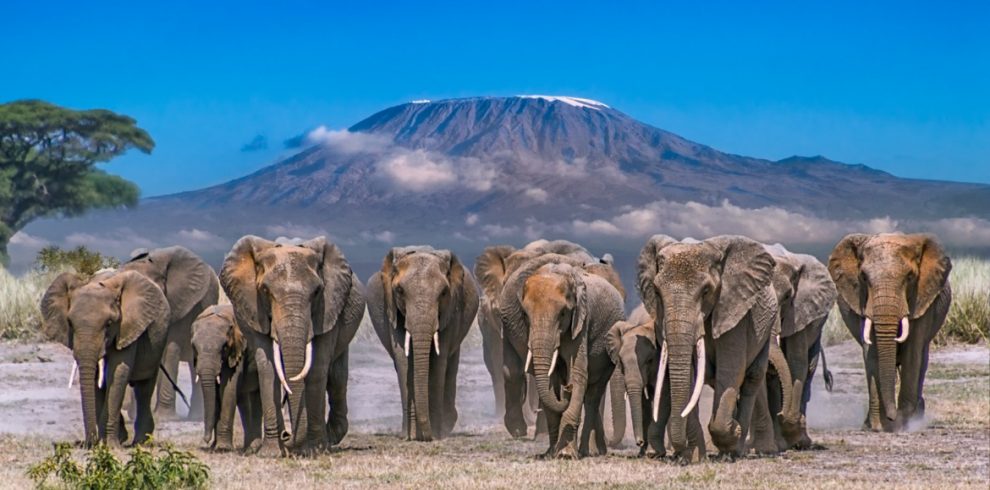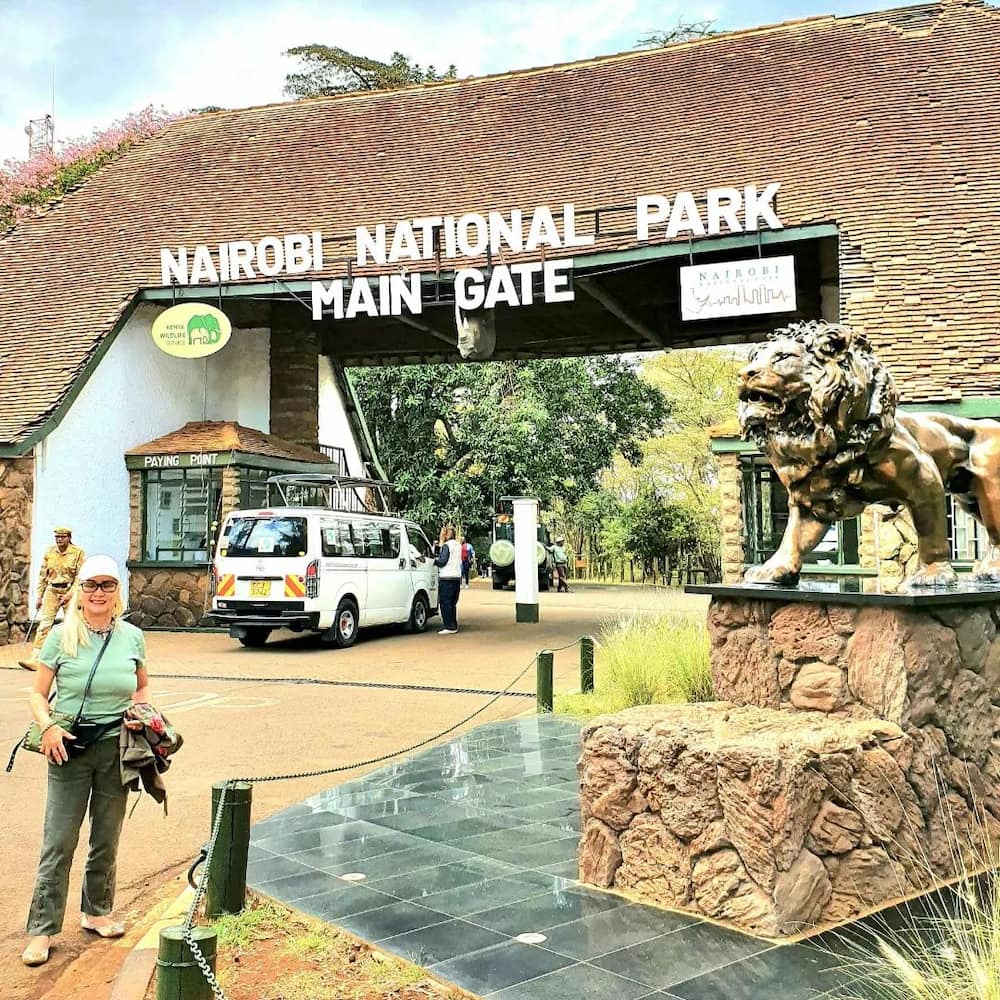See huge flamingo flocks at Lake Nakuru National Park, also known as “pink lake.” Situated along the Great Rift Valley and surrounded by jagged rift valley escarpments, this is one of Kenya’s best national parks. Nairobi, the capital of Kenya, is located northwest of Lake Nakuru National Park. The excellent tarmac route that runs parallel to Kenya’s Ugandan border is about 170 miles away from Nairobi City.
The 188 square kilometre park was established in 1961 primarily because of the lake and flamingos. The name of the lake comes from the nearby town of Nakuru, which means “dust” in Masai. The park was only a small area before it expanded into the wide, open savannah lands surrounding Lake Nakuru and the nearby volcanic mountains. The elevation of Lake Nakuru National Park is approximately 1,754 metres above sea level. Among Kenya’s twenty-three national parks, Lake Nakuru is one of the most popular.
The shallow alkaline lake known as Pink Lake, home to thousands of Greater and Lesser flamingos, is the park’s main draw. Four of the five African big cats are also present in the park, including the exceptional black and white rhinoceros. The park is home to buffaloes, lions, leopards, and the African big five. More than fifty different species of mammals can be found in the park, including African wild dogs, zebras, elands, and waterbucks.
More than 400 different species of birds can be found in the park, including great pelicans, starlings, lovebirds, flamingos, and various dove species.
Black and white rhinoceroses can be found in the Soysambu Conservancy, which is southeast of the Lake Nakuru National Park. Kudos to Kenya’s wildlife agency for fighting the Masaai people with such courage in order to preserve the black rhino population. As of 2009, there were more than 25 black rhinos in the Nakuru National Park alone, in addition to 70 white rhinos and hundreds of Rothschild giraffes.
The climate of Lake Nakuru National Park
Throughout the year, the park never gets too hot or cold. Rather, the temperature remains relatively consistent. The region experiences a range of climates, from semi-arid to subhumid. Although there are two distinct rainy seasons each year, the amount of rainfall falls uniformly throughout the year. Because the park is near the Equator, where daytime highs are typically experienced, nights are usually colder than days. Early morning game drives call for warm clothing; during the day, light clothing is appropriate.
March through May and the first half of November are the wet months; the remaining months are the dry months. Lake Nakuru National Park is a wonderful place to visit during the dry months as animals gather around water catchment areas.

How to get to Lake Nakuru National Park
The park’s gates are open from 7 a.m. to 6 p.m. and can be reached by car or aircraft. The Nairobi-Nakuru highway takes three hours to travel from the capital of Nairobi to the park. Taking a drive with a stop at the Great Rift Valley View is a more picturesque experience than flying. The Kenyan government’s well-tarmacked roads make it simple to access every area of the park, even for two-wheeled safari cars.
You can always take a fly if you don’t want to spend a lot of time in a safari car. Wilson Airport is the daily departure point for domestic flights to Lake Nakuru National Park. Additionally, airfields in other national parks around Kenya are connected to the park. It takes roughly 25 minutes to fly from Nairobi to the airstrip at Naishi, which is located inside Lake Nakuru National Park.
What to do
Visitors can engage in a wide variety of activities at Lake Nakuru National Park. Below is a list of the principal activities:
Game drives
Game drives are the ideal time to see the park’s wildlife. accompanied, depending on the local tour operator you select, by a trained driver-guide. Enjoy the breathtaking scenery of the park and a diverse array of African wildlife, including four of the five critically endangered African Big Five species: buffalo, lions, leopards, and the rare black-and-white rhino. All of these can be seen during the game drive. Among the animals are African wild dogs, hyenas, and giraffes.
Bird watching
With over 450 species of birds, including thousands of great and lesser flamingos, secretary birds, and vultures, the park is a birdwatcher’s dream come true. More native and migratory bird species are drawn to the open woods and savannahs.
Lake Nakuru National Park remains one of Kenya’s best wildlife parks, providing visitors with the opportunity to witness a number of endangered animal species.



